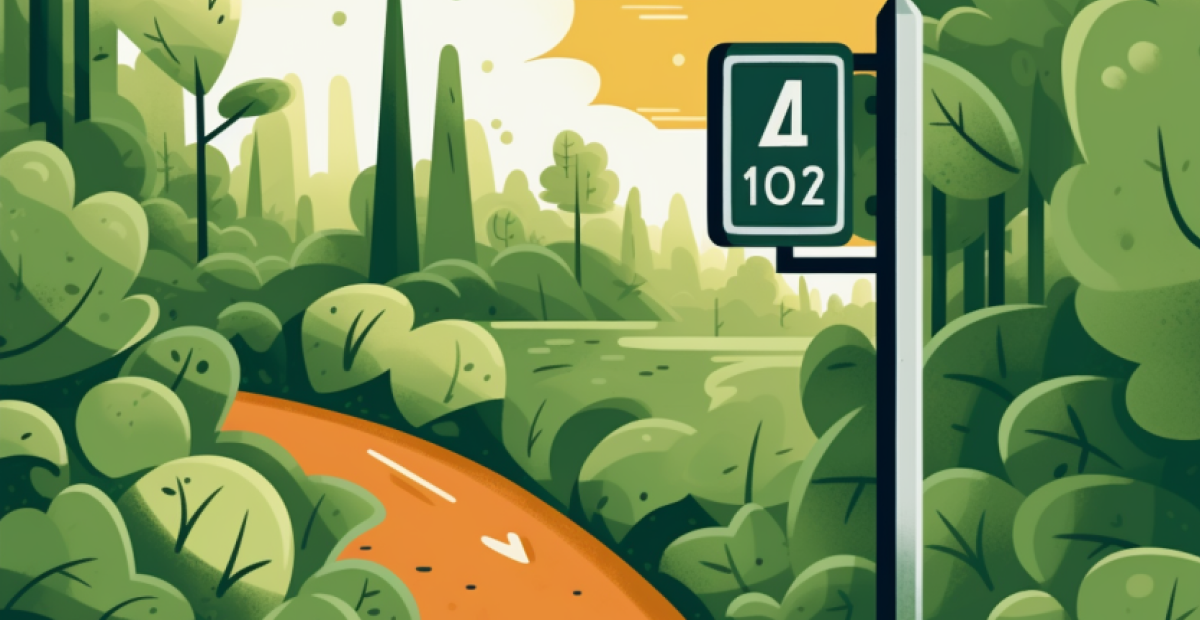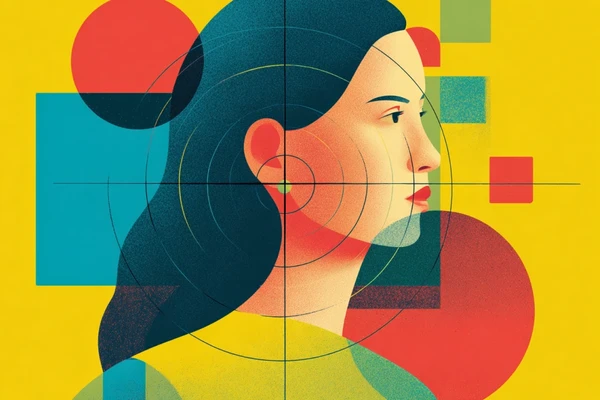Graphic design portfolio website is more than just a collection of work—it's digital showcase, personal brand, and ticket to attracting clients or employers. In a competitive industry, standing out is crucial, and that's why creating an effective graphic design portfolio website is essential for your success.
In this article, I'll give you 8 great tips for creating a best graphic designer portfolio that captivates, impresses, and has a lasting impact on your audience. Get ready to take your graphic design career to new heights with these actionable insights!
Start Here!
Your graphic design portfolio: Make an impression that lasts!
In the ever-evolving realm of graphic design, your online portfolio acts as your gateway to triumph. It's not just a mere compilation of your creations; it's a virtual masterpiece that highlights your ingenuity, flair, and finesse. Think of it as a dazzling exhibit of your artistic arsenal, a visual representation of your proficiency and capabilities.
The way you present your projects should be akin to a master storyteller weaving a captivating tale, each piece meticulously chosen to narrate your growth, versatility, and passion for design. It's not just about displaying pretty images; it's about curating a cohesive narrative that highlights your strengths and communicates your artistic vision.
Get ready to unleash your design prowess as we dive into 8 tips for creating an effective graphic design portfolio website that leaves a lasting impression!
Why you should create a graphic designer portfolio?

Crafting a thoughtful portfolio is highly advantageous for graphic designers in several ways. Firstly, it serves as a visual representation of their expertise, which can instantly demonstrate their capabilities to potential clients or employers. Additionally, a well-curated portfolio acts as a powerful marketing tool, allowing designers to showcase their best work and unique design style. This can help them attract clients who appreciate their distinct sensibilities, while also providing a platform for self-expression and creative exploration.
Sharing a portfolio with peers and industry professionals can also be highly beneficial, as it strengthens networks and opens doors to collaborative opportunities. A well-presented portfolio can instill confidence and credibility, making a compelling case for why clients or employers should choose a particular designer.
Ultimately, a portfolio is a designer's professional identity. It showcases their talent and opens up new possibilities in the highly competitive world of graphic design.
8 essential tips to Captivate, Stand Out, and Soar with your graphic design portfolio
1. Showcase your best work with high-quality images

In the world of design, a picture truly is worth a thousand words. That's why I'm here to help you create a unique and unforgettable portfolio that showcases your talent and expertise.
Imagine this: portfolio opens with a stunning visual, a high-quality image that instantly grabs attention. The crisp details, vibrant colors, and flawless composition make work leap off the screen, drawing viewers in with curiosity and intrigue. With every scroll, designs shine brighter, leaving an indelible mark on anyone who lays eyes on them. Would you like your portfolio to have such an effect?
Of course, you can achieve that effect with some simple tips:
1. Select your strongest and most visually striking projects to feature prominently in your portfolio. These should represent the range of your skills and capture attention immediately.
2. Ensure that your images are of high quality and properly optimized for web viewing. This will enhance the visual impact and make your designs truly shine.
3. Pay attention to the composition and layout of your portfolio. Use whitespace effectively to create a clean and uncluttered presentation that allows your work to take center stage
Don’t forget the importance of versatility. Your portfolio should showcase our ability to tackle a range of design challenges. From print to digital, branding to illustration. It's a testament to versatility as a graphic designer, giving potential clients or employers the confidence that you can bring their vision to life.
2. Tell your story with a compelling About Me page
Clients and employers are not just interested in artistic skills, but also in the story behind yours designs. That's why I always emphasize the importance of a compelling About page that goes beyond the surface. It's an opportunity to share your design journey, inspirations, and the values that fuel your creativity. But it's not just about the visuals. Portfolio tells a story. It showcases growth, creative journey, and unique style. Each project description should be carefully crafted to highlight the objectives, challenges, and outcomes, painting a vivid picture of problem-solving skills and design prowess.
Think about your page as a canvas where your unique story unfolds. You weave together your experiences, passions, and design philosophy to create a powerful narrative. You let potential clients and employers see the person behind the designs, forming a genuine connection that goes beyond aesthetics. To do it you can share the challenges you overcame in a particular project and how it shaped your growth as a designer. Perhaps you were inspired by nature, and it influenced your approach to color palettes and typography. These personal insights give your audience a glimpse into your creative process and what makes your work truly special.
Remember, your About page is an opportunity to leave a lasting impression. Craft it with care, using engaging language and captivating visuals to draw readers in. Let your personality shine through, infusing your page with your unique style and voice.
By telling your story through a compelling About page, you set yourself apart from the crowd. You create a connection that resonates with potential clients and employers on a deeper level. They not only appreciate your designs, but they also appreciate the thought and passion that goes into each and every project.
3. Keep your design simple and easy to navigate

That simplicity is the key to creating a standout portfolio. In a world filled with noise and distractions, a clean and intuitive design can be a breath of fresh air. That's why I always advise creators to embrace simplicity and create a portfolio that guides visitors effortlessly through their work.
For instance, consider using a grid layout to showcase your projects. It allows for a visually appealing and organized presentation, making it easy for visitors to navigate and understand the breadth of your skills. Try also grouping similar projects together, to create a cohesive experience that helps viewers find what they're looking for without any confusion.
The key is to let designs take center stage. Avoid flashy elements or excessive clutter that could overshadow your work. Keep the focus on designs and let them speak for themselves. You can also use white space to further emphasize the importance of your works and eliminate any elements that might distract from admiring them. This will also help you ensure that each section is organized logically, creating a smooth and enjoyable browsing experience.
A well-designed and easy-to-navigate portfolio leaves a lasting impression on your potential clients or employers. It demonstrates attention to detail, professionalism, and understanding of the importance of user experience. When visitors can effortlessly engage with work, they are more likely to remember and appreciate designs.
So, embrace simplicity and create a portfolio that guides visitors effortlessly through your work. Remember, a seamless user experience is the key to ensuring your work shines and leaves a lasting impression.
4. Include testimonials from satisfied clients
Inspiring trust in your audience is incredibly important because without trust they will not choose to work with you. So how do you effectively earn such trust? Your secret weapon can be client testimonials. It's the perfect time to let their words shine and inspire potential clients with the success stories you have created together.
Make sure your portfolio will have a dedicated section filled with authentic testimonials from satisfied clients. These testimonials will highlight the positive impact your designs have had on their businesses. Trust me - the glowing words and heartfelt feedback will speak volumes about your talent and ability to deliver exceptional results.
For example, let's say you designed a branding package for a local business. The client's testimonial could mention how designs elevated their brand identity, increased customer engagement, and ultimately led to significant business growth. Another testimonial could focus on how your website design improved user experience and helped them achieve their online goals.
These testimonials serve as social proof, showcasing the real-life benefits and outcomes that your designs have generated. They build trust and credibility, giving potential clients the reassurance they need to choose you as their graphic designer.
Remember to feature testimonials from a variety of clients, including both big-name brands and small businesses. Potential clients want to see that you can deliver results across different industries and scales.
Don't underestimate the power of client testimonials. Let their words do the talking and showcase the positive impact your designs have had on their businesses. Build trust, inspire confidence, and attract clients who are ready to experience the strength of your design expertise.
5. Show your networking and collaborating skills
Portfolio website is not just a static showcase; it's a dynamic tool for sparking connections and opening doors to exciting opportunities.
If you include a dedicated section that shines a spotlight on your collaborations, partnerships, and joint projects, you will showcase your ability to work effectively in a team environment. Thanks to this you will not only build credibility but also demonstrate your versatility as a designer.
Let's say you collaborated with a web developer to create a stunning website for a client. Highlight this project in your portfolio, emphasizing how your design and the developer's technical expertise seamlessly came together to deliver outstanding results. Another example could be a collaboration with a photographer or illustrator, where their visuals enhanced and complemented your designs.
These showcased collaborations become a networking magnet, attracting potential collaborators who appreciate your teamwork and are eager to work with you. By displaying your ability to collaborate and the successful outcomes it has brought, you show that you are not just a skilled designer but also a team player who can bring visions to life.
So, make the most of your portfolio website by dedicating a section to highlight your collaborations. Let it become a platform that sparks connections, attracts potential collaborators, and expands your professional network!
6. Utilize a graphic design template - a time-saving solution
It would be a good idea to try to create a portfolio yourself, this will further speak in your favor and highlight your skills. Many no-code tools will allow you to create a portfolio without using code. One such creator is BOWWE. It will enable you to quickly build a professional online portfolio using a drag-and-drop editor that lets you avoid the use of even a single line of code.
If you are looking to create an online portfolio very quickly take advantage of graphic design templates to streamline the process and save valuable time. Explore a variety of online portfolio templates available on BOWWE.
Templates offer pre-designed layouts and structures that you can customize to fit your style and showcase your work effortlessly. With a wide range of templates available, you can find one that aligns with your aesthetic and creates a visually stunning portfolio in no time!
7. Showcase your expertise and road to succes

Your portfolio should be a testament to your expertise and problem-solving skills, capturing the attention of potential clients or employers. So be sure to showcase not only final results but also the journey behind each project.
For example, let's say you were tasked with creating a brand identity for a local coffee shop. In your portfolio, you can showcase the various stages of the project, including initial research, brainstorming sessions, and iterations of the logo and packaging designs. By explaining the challenges you faced and the solutions you implemented, you provide valuable context to your work.
Use also case studies and project descriptions. These can serve as a window into your creative thinking and problem-solving abilities. They will demonstrate your ability to understand client needs, overcome obstacles, and deliver effective design solutions.
Furthermore, by highlighting your design process, you create a connection with potential clients or employers. They gain a better understanding of your approach and can envision how you would tackle their own design projects. This transparency builds trust and confidence, setting you apart from other designers who only showcase finished products.
So, as a graphic designer, remember to tailor your portfolio to showcase not just your finished projects, but also your design process and problem-solving skills!
8. Enhance your portfolio with contact info and social media integration
Make it easy for potential clients or employers to reach out to you by including your contact information. Whether it's your email address or phone number, make sure it's easily accessible and prominently displayed.
Additionally, provide links to your social media profiles, giving them a deeper insight into your creative process and personal brand. Include links to platform, such as Instagram or Behance, where clients can explore more of your portfolio and get a glimpse into your creative process.
By including contact information and social media links in your portfolio, you unlock a world of benefits in the digital landscape. Firstly, it makes it effortless for potential clients or employers to reach out to you, increasing the chances of new opportunities coming your way. Your contact information becomes a seamless communication channel, fostering connections effortlessly.
Stunning examples of graphic design portfolio
One of the platforms that offer stunning online portfolio templates is BOWWE. It’s include library of graphic design portfolio templates with great designs, customization options, user-friendly interface, mobile responsiveness and advanced SEO settings.
With BOWWE, graphic designers can create a visually appealing portfolio that reflects their unique style, while easily customizing and updating their portfolio with an intuitive drag-and-drop editor. These templates ensure seamless cross-device display and increase online visibility, helping designers make a lasting impression and stand out in the industry.
Sample templates for a portfolio of graphic designs on the BOWWE:
Unleash your design potential - summary
Let’s recall all crucial tips to create a graphic design portfolio website that will let you shine in the competitive industry:
- Showcase your best work with high-quality images that demand attention,
- Tell your unique story through a compelling About page that speaks volumes about your skills,
- Keep your design simple and user-friendly to guide visitors seamlessly through your work, Harness the power of testimonials from satisfied clients to build trust,
- Showcase your networking and collaboration skills to create more opportunities,
- Utilize a graphic design template to save time,
- Showcase your expertise and road to succes to uncover secrets behind your achievements,
- Enhance your portfolio with contact info and social media integration to better connect with recipients.
With these clues, you can design a portfolio that not only captivates clients but also sparks connections within the design community.
Embrace your design prowess, unleash your creativity, and let your portfolio become a testament to your remarkable talent. Get ready to captivate the design world and embark on an extraordinary journey to success!
Start Here!
Graphic design portfolio - FAQ
What platform should I use to create my portfolio website?
Should I include all of my work in my portfolio?
No, it's best to curate your portfolio and showcase only your best and most relevant work.
How often should I update my portfolio website?
What should I include in my graphic design portfolio?
Your graphic design portfolio should showcase your best and most relevant work that highlights your skills and expertise. Choose a diverse range of projects that demonstrate your capabilities in different design areas, and curate your portfolio to ensure it reflects your strongest work.
What should I avoid including in my graphic design portfolio?
Avoid including outdated or irrelevant work in your portfolio. Focus on showcasing your current skills and style, and remove any projects that no longer represent your capabilities. Additionally, steer clear of unfinished or low-quality work that may detract from the overall impact of your portfolio.
Where can I find a graphic design template for my portfolio?
Finding a graphic design template for your portfolio is easy with online resources. Look for reputable sites or platforms that offer a variety of templates designed specifically for graphic designers.
BOWWE is such a platform. As an all-in-one website development platform, BOWWE offers a wide range of customizable templates tailored specifically for graphic designers. You can browse through their collection of professionally designed templates and choose the one that best suits your style and aesthetic.
How do I create a graphic design portfolio?
Making a online portfolio for a graphic designer involves combining your creative flair with the right tools and techniques. Follow our 8 tips for success, which include:
1. Select High-Quality Images: Choose visually stunning and impactful images that showcase your best work and capture attention.
2. Craft a Compelling About Page: Tell your unique story, design journey, and values to create a personal connection with potential clients or employers.
3. Keep Your Design Simple and User-Friendly: Opt for a clean and intuitive design that guides visitors seamlessly through your portfolio.
4. Include Testimonials from Satisfied Clients: Highlight positive feedback and success stories to build trust and credibility.
5. Utilize Ready Templates: Take advantage of pre-designed templates to streamline the creation process and ensure a professional-looking portfolio.
6. Showcase Diverse Projects: Demonstrate your versatility by including a variety of projects that showcase different design skills and mediums.
7. Provide Clear Navigation: Organize your work into logical sections and ensure easy navigation to help visitors explore your portfolio effortlessly.
8. Optimize for Multi-Device Compatibility: Ensure your portfolio is accessible and visually appealing across various devices, including desktops, tablets, and smartphones.

Karol is a serial entrepreneur, e-commerce speaker m.in for the World Bank, and founder of 3 startups, as part of which he has advised several hundred companies. He was also responsible for projects of the largest financial institutions in Europe, with the smallest project being worth over €50 million.
He has two master's degrees, one in Computer Science and the other in Marketing Management, obtained during his studies in Poland and Portugal. He gained experience in Silicon Valley and while running companies in many countries, including Poland, Portugal, the United States, and Great Britain. For over ten years, he has been helping startups, financial institutions, small and medium-sized enterprises to improve their functioning through digitization.







